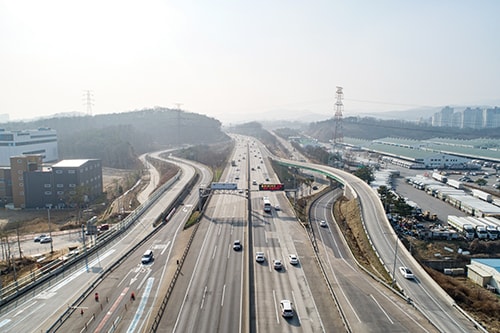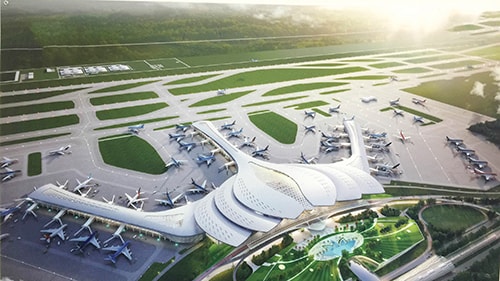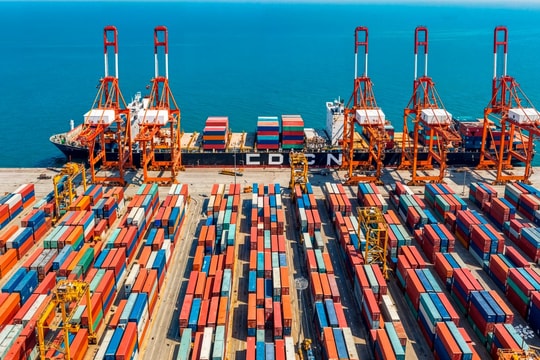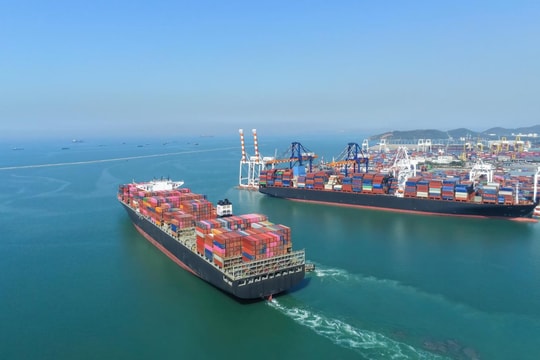(Vietnam Logistics Review)Although there have been positive changes, the matter infrastructure is still considered a bottleneck to decrease competition abilities of the economy. And the Ministry of Transport has introduced many solutions.
Not meeting requirements
Reports from the Ministry of Transport in the 5th meeting session, Assembly term XIV showed our road network is 274,045 km (813km of expressway; 23,863km of national road and 3,160km of railroad).
In the field of maritime, there are 32 seaports in operation with the total designed capacity of around 500 to 550 million tons of cargo pa; there are 48 navigation routes to national ports (943.7km) and 12 ones to special ports. There are 17,232 km of waterway in operation. In the field of airline, there are 21 airports in operation with the capacity of 1,01m tons of cargo pa and 77.75 m passengers pa.

Transport infrastructure system has been paid remarkable attention to: transport activities has gradually had better management, basically meeting local and foreign transport requirements; the quality of transport services was better off with participations from various economic sector, ensuring healthy competitions; transport fee was basically controlled, contributing in production developments and improving competition abilities of the economy. Global Economy Forum’s reports showed the utility and basic quality of Vietnam’s transport infrastructure in 2015 ranked 67, an increase of 36 levels in 5 years (rank 103 in 2010).
  |
However, our infrastructures showed many weaknesses, not meeting requirements of developments, it has not well carried out the role of road paving of the transport sector in the course of industrialization and modernization. The imbalanced in infrastructure development, the new start of expressway system, the outdated railroad system, inadequate investments in post- port services, airport overload, and loose connection among fields of transport have weakened exploitation abilities.
Tasks of priority
Nguyen Van The- Minister of the Ministry of Transport said, to improve transport infrastructure to 2020, many particular tasks have been set: key works as expressways, key national roads, route with high demands of transport and connecting roads will be put in priority. To 2020, there will be 2,000 km of expressway nationwide, North- South Expressway (Hanoi- HCMC sector) will be put in priority.

In railroad: current North-South railroad will be upgraded and the investment project of NorthSouth high speed railroad will be under research. In waterway: water route connecting the Mekong Delta to HCMC will be upgraded in priority; other routes of Tien River, Hau River, Hong River, and Thai Binh River; and lengths of exploiting routes will be expanded. In addition, a number of main local water ports, passenger ports, and cargo ports will be upgraded and newly built serving passenger and cargo transport demands in the Mekong Delta and Hong Delta.
In maritime, system of national sea ports, international gateway ports in key economic zones will be invested in and developed to receive newgeneration container vessels. Lach Huyen and Cai Mep-Thi Vai Ports will be synchronously invested in to maintain the connection among seaports, national transport networks and regional logistics hub. A number of ICDs and other assisting infrastructure will be developed.
In airline, Long Thanh International Airport will be in the progress of investment and construction. At the same time, existing airports will be efficiently exploited; airports as Noi Bai, Tan Son Nhat, Danang, Can Tho, and Cam Ranh will be in priority to synchronously update.
 The Ministry of Transport has allocated around VND 292,416bn in the total Governmental budget in the term 2016 - 2020 (planned governmental budget in 2016 - 2020 is 210,700bn, and mobilized capital is VND 81.76bn). |
Urban traffic infrastructures and local traffic will be developed as well to push up social-economic development.
No small challenges
To achieve all these targets, the transport sector in the term of 2016- 2020 needs VND 952,731bn for investments in all the fields. However, governmental budget is so tight and ODA capital is limited for public debt ceiling. Mobilization temporarily stopped due to the need of improving mechanisms and policies.
The most obvious things to do in improving mechanisms and policies are those relating to recent BOT projects. Although 70 projects (68 in the field of road traffic, 01 in the field of waterway, and 01 in training) in form of BOT with the total investment of VND 209,347bn proved it efficiency in reducing congestions, cutting transport costs and increasing competition abilities, the lack of legal corridor and transparency has caused no less troubles.
The Ministry of Transport has allocated around VND 292,416bn in the total Governmental budget in the term 2016- 2020 (planned governmental budget in 2016- 2020 is 210,700bn, and mobilized capital is VND 81.76bn). The above capital met only 30.6% investment demands- a great barrier for the targets of developing infrastructure structures.
Several basic solutions
According to Minister Nguyen Van The, to implement the above targets, the transport sector will keep developing the Master Plan of Economic Restructuring, connecting growth model with the directions of improving quality, efficiency and competition abilities in the term of 2013-2020 and the Project of Restructuring the Transport sector for the course of industrialization-modernization and sustainable developments in term of 2011-2020. Keep adjusting strategies and development planning to ensure their feasibility. Improving standards, progresses, and economic-technical quantum. Attracting resources for infrastructure development; Improving governmental management role, creating legal mechanisms and framework in directions of removing barriers and difficulties, encouraging various economic sectors to take part in developing transport infrastructure.
Developing a transport market with fair competitions. Having more reasonable development in the direction of reducing road transport market share and increasing railroad, sea transport and local waterway transport market shares. Improving service quality and cutting costs, meeting demands from passengers and cargo transport.

At the same time, improving efficiency and production and competition abilities of enterprises operating in the sector by developing enterprises holding key progresses in the sectors of maritime, railroad, airline and shipbuilding.
Applying modern technology in the course of developing and managing transport; improving qualified human resources, paying much attention to planning ability; predicting, consulting and managing investment, transport infrastructures and transport.





.png)








.png)

